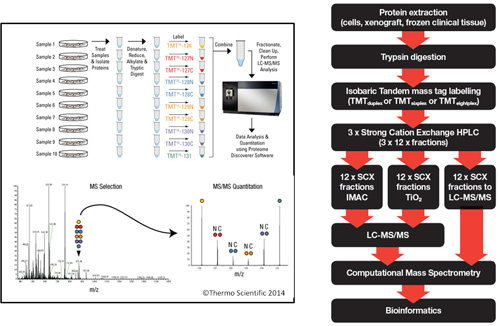
The use of targeted agents against key signaling kinases is transforming cancer treatment. Drugs such as Herceptin and Zelboraf have increased progression-free survival in breast cancer and melanoma respectively and are far from the only examples. However, the complexity of signaling pathway networks allows tumor cells to adapt under monotherapy using alternative pathways to maintain a proliferative phenotype. Such resistance mechanisms may be inherently present at the onset of treatment (de novo resistance) or may develop in response to the treatment (acquired resistance). This has led researchers to call for the use of more comprehensive analysis of signaling pathways to identify resistance pathways, and to then use this knowledge to select precise combinations of drugs matched to the individual tumor profile.
Regulation of pathway activity is achieved through precisely timed gene expression overlain with the more subtle regulation of post-translational modifications such as phosphorylation, glycosylation, and ubiquitination. While genomic tools such as RNAseq and next-generation sequencing may demonstrate gross changes in signaling networks, only a comprehensive analysis of protein post-translational modifications, particularly phosphorylation, across thousands of pathway proteins, can provide the required biological information to enable selection of the most appropriate drug combination and switching of therapies.
For the rest of the story click here.











